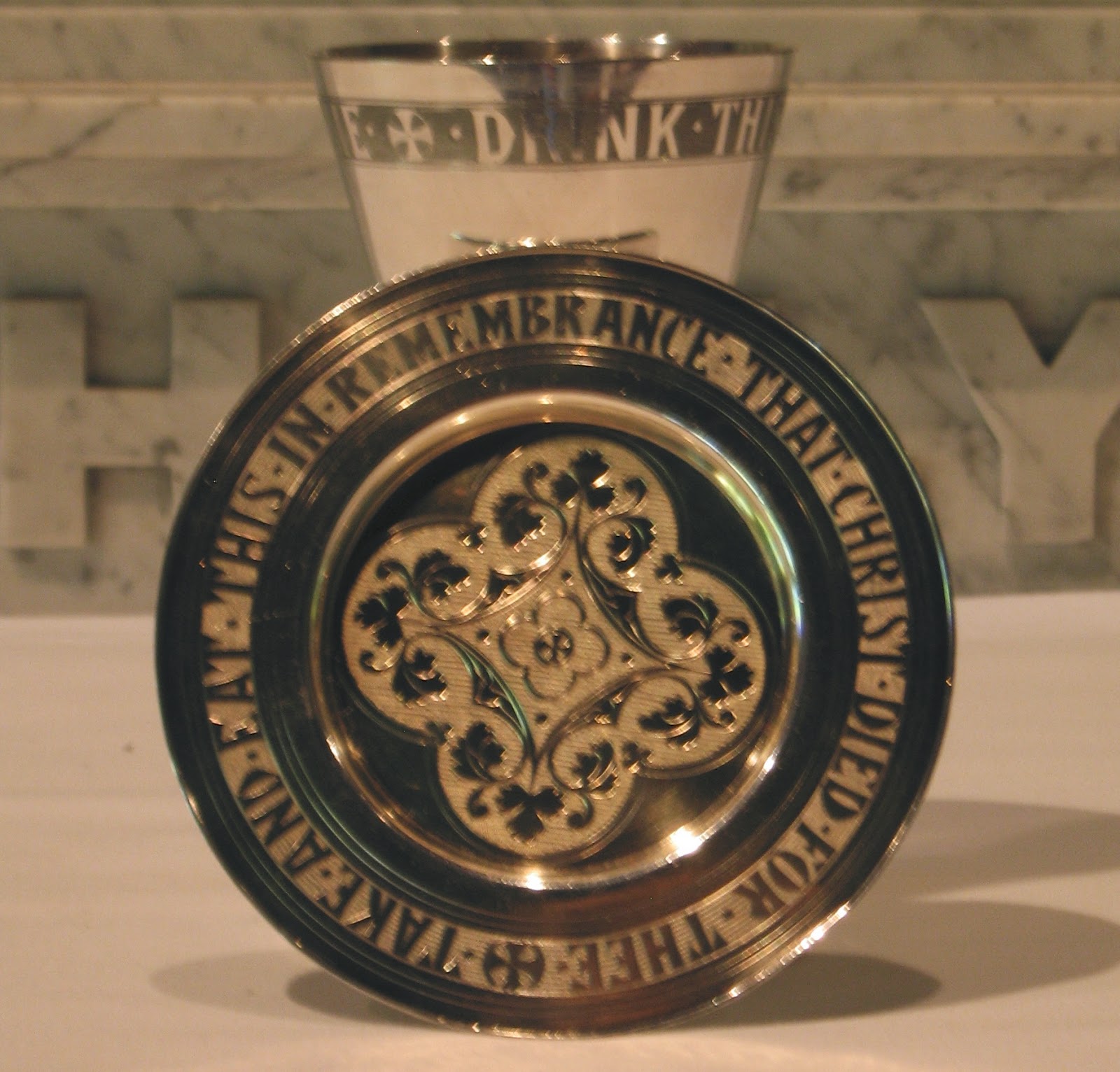The Holy Thursday rites I'm most familiar with, in Lutheran and Episcopal parishes, are similar --- after prayers, lessons and a homily, those comfortable with the practice pad barefoot down the aisle and wash each other's feet as hymns are sung, then share bread and wine.
Then, as psalms are spoken or chanted, a few people move toward the altar and strip it bare. Candlesticks and linens, paraments and banners, flags and brightly-colored cushions, the Gospel book, even, at St. Andrew's, the icon of our patron, are removed from the church, carried away with little ceremony.
Finally, the lights are turned out --- wham --- and the congregation left in darkness to find its way out into the night in silence as best it can.
This was how it went again last night, jointly Lutheran and Episcopalian, blending liturgical elements from both traditions.
It is a symbolic rite that seems to operate on several levels, and the process will be reversed in many parishes during the Easter vigil on Saturday night, when new fire is carried into the church, all the liturgical bling returned, candles lighted from the new fire and, at last, the lights turned on again, all symbolizing resurrection.
Holy Thursday also is called Maundy Thursday, from the Latin Mandatum, or commandment, as recounted in the Gospel of John as it tells the story of the Last Supper, washing of the disciples feet, sharing the bread and wine. "Mandatum novum do vobis ut diligatis invicem sicut dilexi vos" ("A new
commandment I give unto you, That ye love one another; as I have loved
you").
It's a commandment, or mandate, not bounded by liturgical settings and church walls or contained by the elaborate and somtimes restrictive theological boundaries of faith communities.
We'll observe Good Friday at 7 this evening at First Lutheran Church. All are welcome. Doctrinal agreement, even belief, not required.


No comments:
Post a Comment